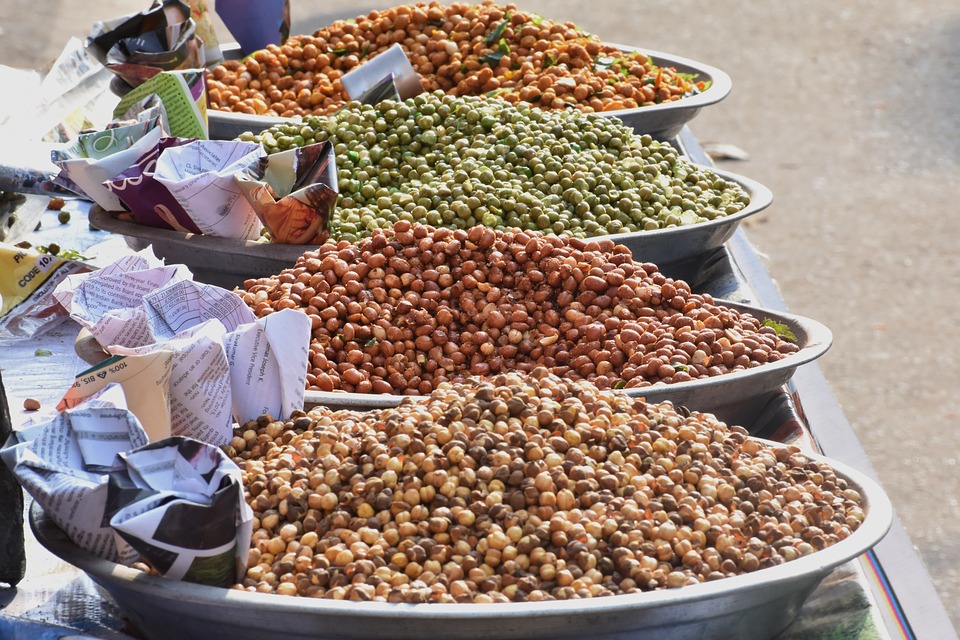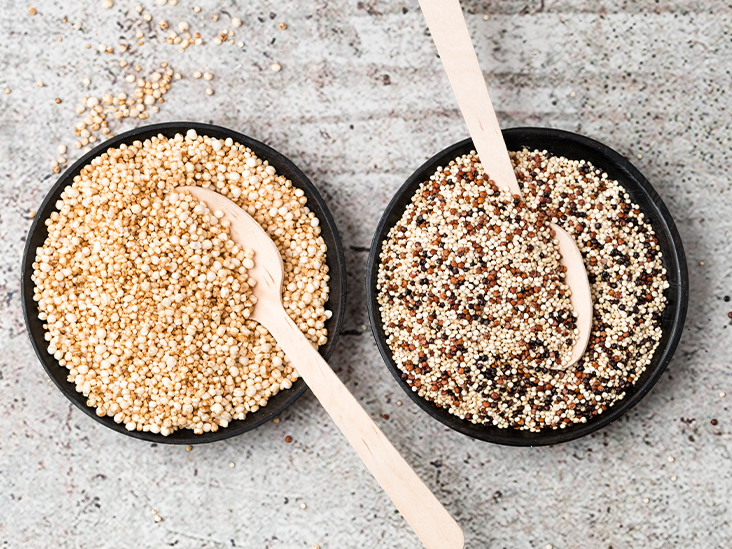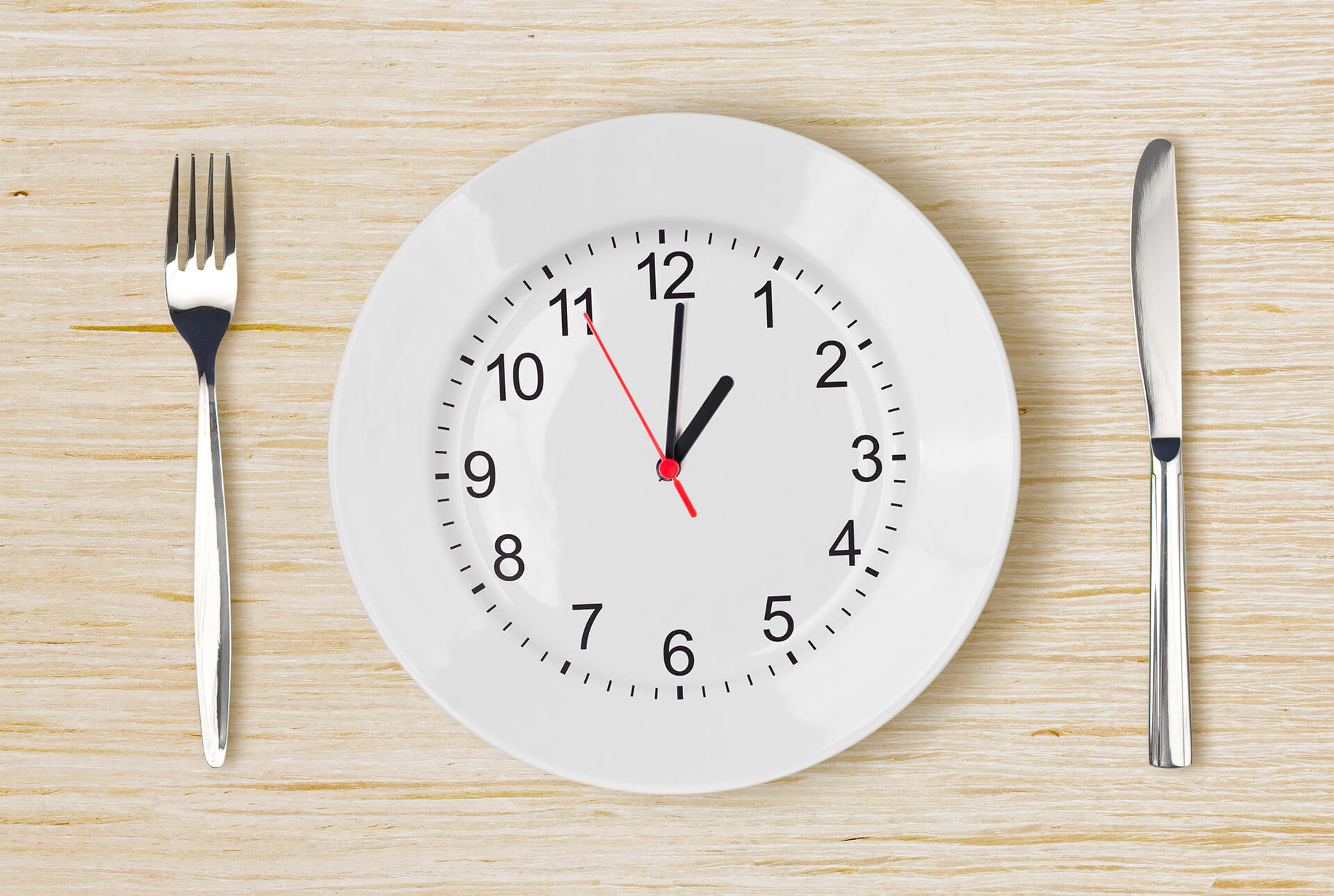
Despite what some people may think, there are many ways to get enough protein on a vegan or vegetarian diet.
However, not all plant-based proteins are complete proteins, meaning protein sources that contain adequate amounts of all nine essential amino acids.
Amino acids are the building blocks of proteins. While your body can make some of them, nine have to be obtained through your diet. These are referred to as essential amino acids and include:
- histidine
- isoleucine
- leucine
- lysine
- methionine
- phenylalanine
- threonine
- tryptophan
- valine
Animal products like beef, fish, dairy, and eggs contain enough of every one of these essential amino acids. Thus, they’re considered complete proteins.
However, many plant sources of protein are too low in or missing one or more of these essential amino acids. They’re considered incomplete protein sources.
Still, given that plant foods contain varying amounts of amino acids, you can manage to get enough of each essential amino acid throughout the day by eating a varied diet.
For example, grains like rice are too low in lysine to be considered a complete source of protein. Yet, by also eating lentils or beans, which are higher in lysine, throughout the day, you can be sure to obtain all nine essential amino acids.
Nevertheless, some people like knowing they’re getting complete proteins in a particular meal.
Fortunately for vegans and vegetarians, several plant-based foods and combos contain adequate amounts of all nine essential amino acids.
Here are 13 complete protein sources for vegetarians and vegans.

1. Quinoa
Quinoa is an ancient grain that looks similar to couscous but has a crunchy texture and nutty flavor.
As it doesn’t grow from grasses like other cereals and grains, it’s technically considered a pseudocereal and naturally gluten-free.
One cup (185 grams) of cooked quinoa provides approximately 8 grams of protein.
In addition to being a complete protein, quinoa provides more magnesium, iron, fiber, and zinc than many common grains.
You can use quinoa in place of rice in most recipes. It can also be simmered in an alternative milk for a creamy, protein-rich breakfast porridge.
Though most supermarkets have quinoa in stock, buying online may offer you a wider selection and possibly better prices.
2. Tofu, tempeh, and edamame
Tofu, tempeh, and edamame are all made from soybeans and make for excellent plant-based protein sources.
Tofu is made from coagulated soy milk that’s pressed into white blocks and comes in a variety of textures, including silken, firm, and extra-firm. As it’s quite bland, tofu tends to take on the flavor of the foods with which it is cooked.
A 3-ounce (85-gram) serving of tofu provides approximately 8 grams of protein. It also offers 15% of the Daily Value (DV) for calcium, as well as smaller amounts of potassium and iron.
Tempeh is much chewier and nuttier than tofu and made from fermented soybeans, which are often combined with other seeds and grains to form a firm, dense cake.
Meanwhile, edamame are whole, immature soybeans that are green and have a slightly sweet, grassy flavor. They’re usually steamed or boiled and can be enjoyed on their own as a snack. Alternatively, they can be added to salads, soups, or grain bowls.
Three ounces (85 grams) of tempeh contain 11 grams of protein. This serving is also a good source of fiber and iron and contains potassium and calcium.
A 1/2 cup (85 grams) of whole edamame provides 8 grams of protein along with a good amount of fiber, calcium, iron, and vitamin C.
3. Amaranth
Amaranth is another pseudocereal that’s a complete source of protein.
Once considered a staple food in Incan, Myan, and Aztec cultures, it has become a popular gluten-free grain alternative.
Amaranth is a versatile grain that can be boiled for a side dish or porridge, or popped in a skillet to add texture to granola bars or salads. Similarly to quinoa, it has a delicate, nutty taste and retains its crunch even when cooked.
When ground into a flour, amaranth can also be used in gluten-free baking.
One cup (246 grams) of cooked amaranth provides approximately 9 grams of protein. It’s also an excellent source of manganese, magnesium phosphorus, and iron.
In fact, 1 cup (246 grams) of cooked amaranth provides more than 100% of the DV for manganese, an essential mineral that’s important for brain health.
If you can’t find amaranth locally, you can buy it online.
4. Buckwheat
While it’s not as high in protein as quinoa or amaranth, buckwheat is another pseudocereal that’s a plant-based source of complete protein.
Nutty in flavor, the hulled kernels, or groats, can be cooked similarly to oatmeal or ground into a flour and used in baking. In Japanese cooking, buckwheat is most commonly consumed in the form of noodles, which are called soba.
One cup (168 grams) of cooked buckwheat groats provides approximately 6 grams of protein.
This pseudocereal is also a good source of many essential minerals, including phosphorus, manganese, copper, magnesium, and iron.
You can buy buckwheat in specialty stores or online.
5. Ezekiel bread
Ezekiel bread is made from sprouted whole grains and legumes, including barley, soybeans, wheat, lentils, millet, and spelt.
Two slices (68 grams) of the bread contain 8 grams of protein.
Unlike most breads, the combination of whole grains and legumes in Ezekiel bread provides all nine essential amino acids.
Plus, studies suggest that sprouting grains and legumes increases their amino acid content, especially their content of the amino acid lysine.
For an extra protein boost, use Ezekiel bread to make a vegan BLT sandwich with tempeh instead of bacon, or toast the bread and top it with peanut butter and chia seeds.
You can look for Ezekiel bread at your local supermarket or shop for it online.
6. Spirulina
Spirulina is a type of blue-green algae that’s a popular supplement among those on vegan and vegetarian diets.
While it can be purchased as tablets, the powdered form of spirulina can be easily added to smoothies, granola bars, soups, and salads for a boost of nutrition.
Just 1 tablespoon (7 grams) of dried spirulina provides 4 grams of protein.
In addition to being a source of complete protein, spirulina is rich in antioxidants and a good source of several B vitamins, copper, and iron.
If you would like to give spirulina a try, you can find it in specialty stores or online.
7. Hemp seeds
Coming from the hemp plant Cannabis sativa, hemp seeds are members of the same species as marijuana, but they contain only trace amounts of tetrahydrocannabinol (THC), the psychoactive component of marijuana.
As a result, hemp seeds are unlikely to contain enough THC to cause a high feeling or any of the other psychoactive effects that are associated with marijuana (22Trusted Source).
However, there is concern that hemp seeds could become contaminated with TCH from other parts of the plant during harvesting or storing. Therefore, it’s important to purchase seeds from trusted brands that test for THC.
Technically a nut, the edible whites inside of hemp seeds are referred to as hemp hearts and incredibly nutritious.
In addition to being a source of complete protein, hemp hearts are particularly rich in the essential fatty acids linoleic acid (omega-6) and alpha-linolenic acid (omega-3).
Three tablespoons (30 grams) of raw, hulled hemp seeds have an impressive 10 grams of protein and 15% of the DV for iron. They’re also a good source of phosphorus, potassium, magnesium, and zinc.
Hemp hearts have a mild nutty flavor and can be sprinkled over yogurt or salads, added to smoothies, or included in homemade granola and energy bars.
These tasty seeds are widely available in stores and online.
8. Chia seeds
Chia seeds are tiny round seeds that are often black or white.
They’re unique in that they can absorb liquid and form a gel-like substance. As a result, they can be used to make puddings and pectin-free jams. They’re also commonly used as an egg substitute in vegan baking.
However, chia seeds can also be used raw as a topping for oatmeal or salads, mixed into baked goods, or added to smoothies.
Two tablespoons (28 grams) of chia seeds provide 4 grams of protein. They’re also a good source of omega-3s, iron, calcium, magnesium, and selenium (24Trusted Source, 25Trusted Source).
If you would like to give chia seeds a try, stock up at your local supermarket or online.
9. Nutritional yeast
Nutritional yeast is a deactivated strain of Saccharomyces cerevisiae that’s grown specifically to be a food product.
Commercially, nutritional yeast is sold as a yellow powder or flakes and has a distinctive umami flavor that can be used to add a cheese-like flavor to vegan dishes, such as popcorn, pasta, or mashed potatoes.
A 1/4-cup (15-gram) serving of nutritional yeast provides 8 grams of complete protein (26Trusted Source).
When fortified, nutritional yeast can also be an excellent source of zinc, magnesium, copper, manganese, and all the B vitamins, including B12 (26Trusted Source).
You can shop for nutritional yeast locally or online.
10. Rice and beans
Rice and beans are a classic pairing that’s a source of complete protein.
Both brown and white rice are low in lysine but high in methionine. In contrast, beans are high in lysine but low in methionine. As such, combining them allows you to get enough of each, as well as the remaining seven essential amino acids, to count as a complete protein.
One cup (239 grams) of rice and beans provides 12 grams of protein and 10 grams of fiber (27Trusted Source).
While you can enjoy the mixture on its own, rice and beans can be topped with guacamole, salsa, and roasted vegetables for a simple, filling meal.
11. Pita and hummus
A delicious Middle Eastern classic, pita and hummus are another combination that provides all nine essential amino acids.
Similarly to rice, the wheat used to make pita is too low in lysine to be considered a complete protein source. However, chickpeas — the main ingredient in hummus — are rich in lysine (28Trusted Source, 29Trusted Source).
One medium-sized (57-gram) whole wheat pita with 2 tablespoons (30 grams) of hummus provides approximately 7 grams of protein (30Trusted Source, 31Trusted Source).
In addition to serving as a snack, adding fried or baked ground chickpea balls known as falafel will further increase the protein content of your pita and hummus.
The bottom line
Despite some concerns over being able to get adequate protein on a vegan or vegetarian diet, many high protein, plant-based foods are available.
Furthermore, several of these foods even provide all nine essential amino acids and are therefore considered complete proteins.
To ensure you’re meeting your amino acid needs on a vegan or vegetarian diet, try incorporating more of these complete protein sources into a varied diet.
This article was originally published here





